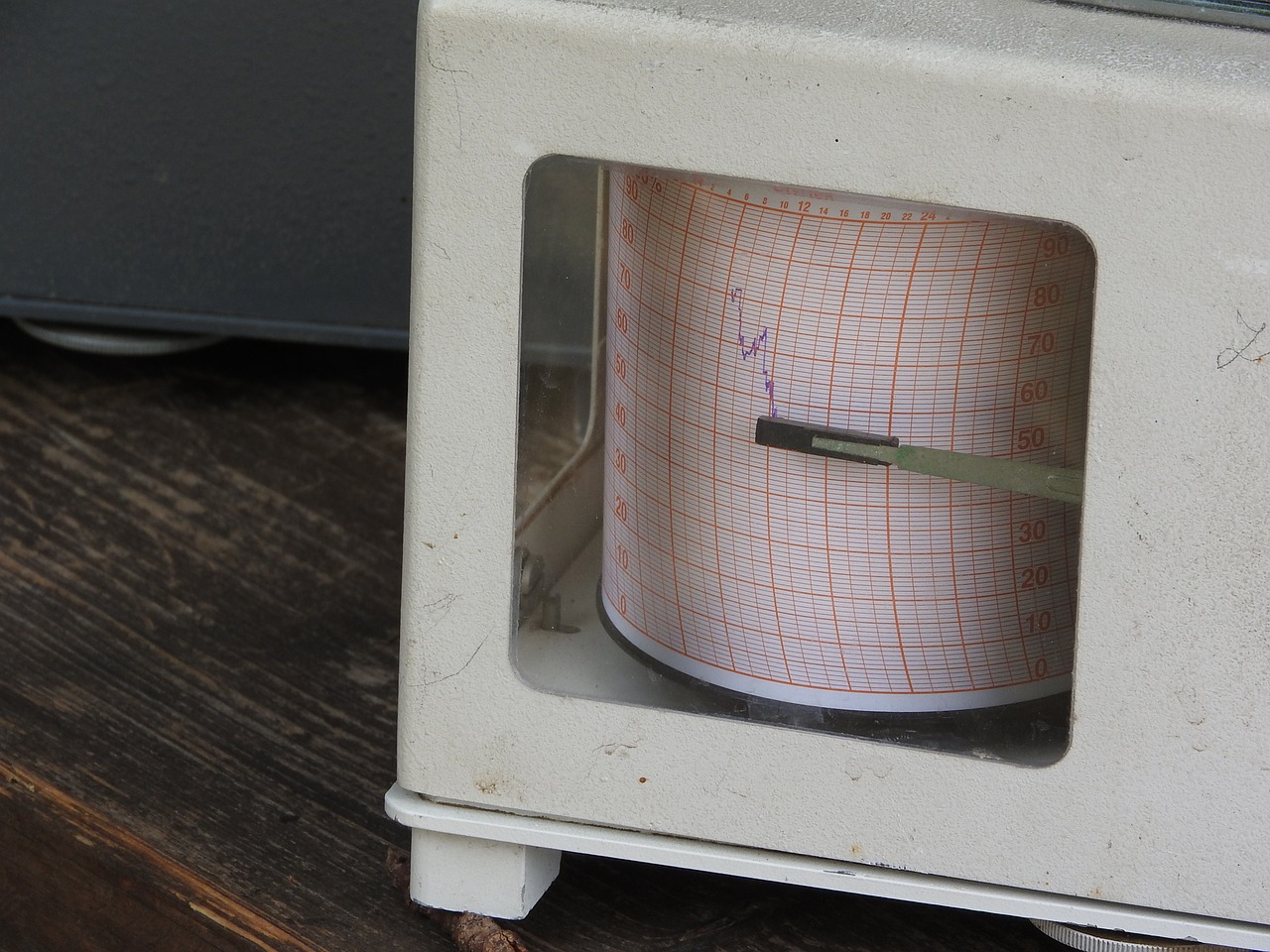Understanding Chart Patterns - A Trader’s Perspective
In the world of trading, understanding chart patterns is like having a secret map that leads you to treasure. These patterns serve as vital indicators of potential market movements, enabling traders to make informed decisions. Imagine walking into a room filled with doors, each leading to different outcomes; chart patterns help you choose the right door to open. They not only enhance your decision-making process but also play a crucial role in risk management. By recognizing these patterns, traders can anticipate price movements and adjust their strategies accordingly, ultimately improving their chances of success.
Chart patterns are essential tools for traders, acting as visual representations of market psychology. They reflect the emotions and behaviors of market participants, allowing traders to gauge the sentiment behind price movements. By studying these patterns, traders can identify potential entry and exit points, which is critical for maximizing profits and minimizing losses. Furthermore, chart patterns help in establishing a trader's risk-reward ratio, ensuring that they can make calculated decisions rather than relying on gut feelings. This analytical approach is vital in today’s fast-paced trading environment.
There are various types of chart patterns, each signaling different market conditions. Understanding these patterns is essential for traders who wish to predict price movements effectively. The two main categories of chart patterns are continuation patterns and reversal patterns. Each of these categories contains several specific patterns that traders should be familiar with. For instance, continuation patterns suggest that the current trend will continue, while reversal patterns indicate a potential change in market direction. Recognizing these distinctions can significantly impact a trader's strategy and overall performance.
Continuation patterns are like a pause button in a movie; they indicate that the current trend is likely to resume after a brief consolidation period. Recognizing these patterns can help traders maintain their positions or enter new trades with confidence. Some common continuation patterns include flags, pennants, and triangles. Each of these patterns provides unique insights into market behavior, allowing traders to capitalize on momentum. For example, flags and pennants often form after a strong price movement, suggesting that a brief consolidation will precede a continuation of that trend.
Flags and pennants are short-term continuation patterns that traders should keep an eye on. They typically form after a strong price movement, indicating a brief consolidation before the prevailing trend resumes. Flags appear as rectangular shapes that slope against the prevailing trend, while pennants resemble small symmetrical triangles. Recognizing these patterns can offer traders opportunities to enter positions at favorable prices, allowing them to ride the wave of momentum as the trend resumes.
Triangle patterns, including ascending, descending, and symmetrical triangles, are essential for timing entry and exit points in trades. These patterns often indicate a period of indecision in the market, where buyers and sellers are in a tug-of-war. As the price action narrows, a breakout or breakdown is imminent. Traders can use these patterns to anticipate significant price movements, allowing them to position themselves advantageously.
Reversal patterns are the game-changers in trading; they signal potential trend changes that can dramatically alter the market landscape. By recognizing these patterns, traders can anticipate shifts in market direction and adjust their strategies accordingly. Common reversal patterns include head and shoulders, double tops and bottoms, and inverse head and shoulders. Understanding these formations can help traders exit positions at the right time or enter new ones when the market changes direction.
Accurately identifying chart patterns requires a keen eye and a lot of practice. Traders must learn to recognize these formations across various timeframes to enhance their trading effectiveness. This skill is akin to learning a new language; the more you practice, the more fluent you become. Regularly analyzing historical data can help traders develop their pattern recognition skills, boosting their confidence in live trading scenarios. The key is to remain patient and persistent, as mastery takes time.
Incorporating technical indicators can significantly enhance the identification of chart patterns. Indicators like moving averages, RSI, and MACD can provide additional confirmation, increasing the likelihood of successful trades. When used in conjunction with chart patterns, these indicators can serve as a powerful toolkit for traders. For instance, if a trader identifies a bullish flag pattern and the RSI indicates oversold conditions, the chances of a successful trade increase considerably.
Regular practice is essential for developing a trader’s skills in recognizing chart patterns. By analyzing historical data and simulating trades, traders can build their confidence and improve their effectiveness in real-time scenarios. Just like a musician practices their scales, traders must hone their skills through repetition and experience. Over time, this practice will lead to a more intuitive understanding of market movements and chart patterns.
Despite the benefits of chart patterns, traders often make mistakes in their analysis, leading to poor decision-making. Understanding these common pitfalls can enhance trading performance and risk management. For example, overlooking the broader market context can result in misinterpretations of chart patterns. It’s crucial for traders to consider fundamental factors and overall market trends alongside technical analysis.
Ignoring the broader market context can lead to significant errors in judgment. Traders should always consider how external factors, such as economic news or geopolitical events, can impact market conditions. By doing so, they can avoid false signals and make more informed trading decisions. It’s like trying to read a book without understanding the plot; you might miss the critical twists and turns.
While chart patterns are invaluable, relying solely on them without considering other indicators can lead to missed opportunities and increased risk. A well-rounded trading strategy should incorporate various tools and analyses. Think of it as cooking a meal; you wouldn’t rely on just one ingredient to create a delicious dish. Similarly, a successful trading strategy requires a blend of chart patterns, technical indicators, and market context.
- What are chart patterns? Chart patterns are formations created by the price movements of a security on a chart, which traders use to predict future price movements.
- How can I identify chart patterns? Identifying chart patterns requires practice and experience, often enhanced by using technical indicators alongside traditional analysis.
- What are the most common chart patterns? Some of the most common chart patterns include flags, pennants, triangles, head and shoulders, and double tops and bottoms.
- Why are chart patterns important in trading? Chart patterns help traders identify potential market movements, allowing for better decision-making and risk management.

The Importance of Chart Patterns
Chart patterns are the unsung heroes of trading. They serve as visual representations of market psychology, revealing the collective emotions and behaviors of traders. By analyzing these patterns, traders can gain valuable insights into potential market movements, which is crucial for making informed trading decisions. Imagine walking into a crowded room full of people, each displaying different emotions—some are anxious, others are excited. Chart patterns are like those emotions, helping you decipher what the market might do next.
Understanding chart patterns is not just about spotting shapes on a graph; it's about recognizing the underlying market dynamics. These patterns can signal potential price movements, helping traders navigate the often tumultuous waters of the financial markets. For instance, a trader who can identify a bullish flag pattern is likely to position themselves for a potential upward breakout, thus maximizing their profit potential.
Moreover, chart patterns play a significant role in risk management. By understanding the implications of different patterns, traders can set more effective stop-loss orders and take-profit levels. This means that when a trader identifies a reversal pattern, they can adjust their strategy to minimize losses should the market move against them. In essence, chart patterns equip traders with the tools they need to manage risk while optimizing their trading strategies.
To further illustrate the importance of chart patterns, consider the following table that outlines the key benefits:
| Benefit | Description |
|---|---|
| Market Prediction | Helps traders anticipate potential market movements. |
| Decision Making | Facilitates informed trading decisions based on visual cues. |
| Risk Management | Enhances the ability to set stop-loss and take-profit levels. |
| Psychological Insight | Reveals market sentiment and trader psychology. |
In conclusion, the significance of chart patterns in trading cannot be overstated. They are essential for identifying potential market movements, improving decision-making, and managing risk. By mastering chart patterns, traders can enhance their trading strategies and increase their chances of success in the dynamic world of trading.

Types of Chart Patterns
Chart patterns are like the fingerprints of the market, revealing the underlying psychology of traders and investors. Each pattern tells a story, and understanding these stories can significantly enhance a trader's ability to predict market movements. There are two primary categories of chart patterns: continuation patterns and reversal patterns. Each category serves a distinct purpose in trading strategy, helping traders make informed decisions based on market behavior.
Continuation patterns suggest that the existing trend will continue after a brief pause, acting as a signal for traders to either maintain their positions or enter new trades. Conversely, reversal patterns indicate a potential change in market direction, allowing traders to adjust their strategies accordingly. Recognizing these patterns is essential for anyone serious about trading, as they can provide critical insights into future price movements.
Let’s delve deeper into these two categories:
Continuation patterns are vital for traders who want to ride the wave of an ongoing trend. They provide opportunities to enter trades with a favorable risk-to-reward ratio. Some common continuation patterns include:
- Flags: These are rectangular-shaped patterns that slope against the prevailing trend. They typically form after a strong price movement, indicating a brief consolidation before the trend resumes.
- Pennants: Similar to flags but with converging trendlines, pennants signal a short pause in the market. They often follow a significant price movement and suggest a continuation of the trend.
- Triangles: This category includes ascending, descending, and symmetrical triangles. Each type indicates potential breakouts or breakdowns, helping traders time their entries and exits effectively.
Both flags and pennants are short-term continuation patterns that provide traders with a chance to capitalize on momentum. Flags resemble a rectangular shape and typically slope against the prevailing trend, while pennants have converging trendlines that create a triangle shape. The key to trading these patterns lies in identifying them early and entering trades just as the price breaks out of the consolidation phase.
Triangle patterns are fascinating because they can be both continuation and reversal patterns, depending on their context. For instance, an ascending triangle, characterized by a flat upper trendline and an upward-sloping lower trendline, often indicates a bullish breakout. On the other hand, a descending triangle suggests a bearish breakout. Symmetrical triangles, with both trendlines converging, indicate indecision in the market and can lead to significant price movements in either direction. Recognizing these patterns can be the difference between a profitable trade and a missed opportunity.
Reversal patterns are equally important as they signal that the current trend may be coming to an end. Understanding these patterns allows traders to anticipate shifts in market direction and adjust their strategies accordingly. Some well-known reversal patterns include:
- Head and Shoulders: This pattern indicates a reversal of an uptrend, featuring three peaks: a higher peak (head) between two lower peaks (shoulders).
- Double Tops and Bottoms: A double top signals a bearish reversal after an uptrend, while a double bottom indicates a bullish reversal after a downtrend.
- Inverse Head and Shoulders: This is the opposite of the head and shoulders pattern and signifies a potential bullish reversal.
Understanding these types of chart patterns is fundamental for traders who wish to enhance their market analysis skills. By recognizing patterns early, traders can make informed decisions that align with market trends, ultimately leading to better trading outcomes.

Continuation Patterns
When it comes to trading, are like the calm before the storm, indicating that the current trend is poised to continue after a brief pause. Imagine you're driving down a highway, and you see a sign that says "Road Work Ahead." You know that there might be a temporary slowdown, but once you pass it, you can expect to speed up again. That's precisely what continuation patterns signal to traders: a momentary consolidation before the market resumes its journey in the same direction.
These patterns are crucial for traders who want to capitalize on existing trends without getting caught in the noise of market fluctuations. By recognizing these formations, traders can make informed decisions about whether to maintain their positions or enter new trades. The beauty of continuation patterns lies in their ability to provide clarity amidst the chaos of price movements.
Some common types of continuation patterns include:
- Flags: These are rectangular-shaped patterns that slope against the prevailing trend, resembling a flag on a pole. They often occur after a strong price movement and indicate a brief consolidation before the trend resumes.
- Pennants: Similar to flags but shaped like a small symmetrical triangle, pennants form after a significant price movement and suggest that the market is gathering momentum for the next move.
- Triangles: Triangles come in various forms—ascending, descending, and symmetrical—and they indicate a tightening range of price action. The breakout direction from these triangles often confirms the continuation of the prevailing trend.
Recognizing these patterns can significantly enhance a trader's ability to make timely decisions. However, it's essential to combine this knowledge with other indicators and market analysis to create a well-rounded trading strategy. For instance, a trader might look for volume spikes accompanying a breakout from a flag or pennant pattern, which can serve as an additional confirmation of the trend's continuation.
In conclusion, mastering continuation patterns is a vital skill for any trader looking to navigate the markets successfully. By paying attention to these signs, traders can position themselves strategically, riding the wave of momentum and maximizing their potential for profit.
Q1: What are continuation patterns in trading?
A continuation pattern is a chart formation that indicates the prevailing trend is likely to continue after a period of consolidation. These patterns help traders make informed decisions about entering or maintaining positions.
Q2: How can I identify continuation patterns?
Traders can identify continuation patterns by looking for specific formations on price charts, such as flags, pennants, and triangles. It's essential to analyze these patterns in conjunction with other technical indicators for confirmation.
Q3: Are continuation patterns always reliable?
While continuation patterns can be effective indicators, they are not foolproof. Market conditions can change rapidly, so it's crucial to consider additional factors like volume and overall market trends when making trading decisions.
Q4: How can I practice recognizing continuation patterns?
Regularly analyzing historical price charts and using trading simulators can help traders develop their skills in recognizing continuation patterns. Additionally, studying real-time market movements can enhance pattern recognition in live trading scenarios.

Flags and Pennants
Flags and pennants are two of the most recognized continuation patterns in the trading world, often appearing after a strong price movement. Think of them as the calm before the storm; they signal that the prevailing trend is likely to continue after a brief pause. When you spot these patterns on a chart, it's like finding a treasure map that points you toward potential profits.
Flags typically resemble a small rectangular shape that slopes against the prevailing trend, while pennants look like a small symmetrical triangle that forms after a strong price movement. Both patterns indicate a consolidation phase, where the market takes a breath before resuming its previous direction. Recognizing these patterns can be a game-changer for traders, allowing them to make informed decisions about when to enter or exit trades.
To illustrate, consider the following table that outlines the characteristics of flags and pennants:
| Pattern | Shape | Direction | Duration |
|---|---|---|---|
| Flag | Rectangular | Against the trend | Short-term (1-3 weeks) |
| Pennant | Symmetrical triangle | Continuation of the trend | Short-term (1-3 weeks) |
When you spot a flag or pennant, you can use them to determine your entry and exit points. For instance, once the price breaks out of the pattern in the direction of the prevailing trend, that's your cue to jump in. This breakout often comes with increased volume, which is a strong confirmation of the pattern's validity. It’s like a green light on a busy street—when it changes, you know it’s time to go!
However, as with any trading strategy, it’s essential to manage your risk appropriately. Setting stop-loss orders just below the pattern can help protect your capital in case the market decides to play tricks on you. After all, while flags and pennants are reliable indicators, they aren’t foolproof. The market has a way of surprising even the most seasoned traders.
In conclusion, flags and pennants are powerful tools in a trader's arsenal. By learning to identify these patterns and understanding their implications, you can significantly enhance your trading strategy. So, the next time you see a flag or pennant forming on your chart, remember that it’s not just a pause in the action; it’s a potential opportunity waiting to be seized!
- What are flags and pennants in trading? Flags and pennants are continuation patterns that indicate a brief consolidation in the market before the prevailing trend resumes.
- How do I identify flags and pennants? Flags appear as small rectangles that slope against the trend, while pennants form symmetrical triangles after a strong price movement.
- What should I do when I spot these patterns? Look for a breakout in the direction of the trend, and consider entering a trade while managing your risk with stop-loss orders.
- Are flags and pennants always reliable? While they are strong indicators, it’s crucial to consider other market factors and indicators to confirm your trading decisions.

Triangles
Triangles are fascinating chart patterns that can provide traders with valuable insights into potential market movements. These patterns come in three primary forms: ascending triangles, descending triangles, and symmetrical triangles. Each type offers unique signals about the future direction of price action, making them essential tools in a trader’s arsenal.
To understand how triangles work, imagine a game of tug-of-war. On one side, you have buyers pulling the price up, while on the other side, sellers are trying to pull it down. As the struggle continues, the price movement starts to narrow, forming a triangle. This narrowing indicates that a breakout is imminent, whether to the upside or downside. Recognizing these patterns early can significantly enhance your trading strategy, enabling you to enter or exit trades at the right moment.
Let’s break down the three types of triangle patterns:
- Ascending Triangle: This pattern is characterized by a horizontal resistance line at the top and an upward sloping support line at the bottom. It suggests that buyers are gradually gaining strength, which often leads to a breakout above the resistance level.
- Descending Triangle: In contrast, this pattern features a horizontal support line at the bottom and a downward sloping resistance line at the top. It indicates that sellers are becoming more aggressive, potentially leading to a breakdown below the support level.
- Symmetrical Triangle: This pattern has both upward and downward sloping trendlines converging towards a point. It reflects a period of consolidation and indecision in the market, with a breakout likely occurring in either direction.
Identifying these triangles on a chart is crucial for timing your trades effectively. For instance, when you spot an ascending triangle, you might consider entering a long position as the price approaches the resistance line, anticipating a breakout. Conversely, if you identify a descending triangle, you might prepare to short the market as it nears the support level.
It's important to note that volume plays a critical role in confirming the validity of these patterns. A breakout accompanied by increased volume signals stronger conviction among traders, enhancing the likelihood that the price will continue in the breakout direction. Conversely, a breakout on low volume may indicate a false move, so always keep an eye on volume trends.
In summary, triangles are powerful tools that can help traders predict potential price movements. By mastering the art of recognizing these patterns and understanding their implications, you can significantly improve your trading strategy and decision-making process.
- What is the significance of triangle patterns in trading? Triangle patterns help traders identify potential breakout or breakdown points, allowing for better timing in their trades.
- How can I confirm a triangle breakout? Look for increased trading volume accompanying the breakout, as this indicates stronger market conviction.
- Can triangle patterns appear on all timeframes? Yes, triangle patterns can be found on any timeframe, but their reliability may vary with the timeframe chosen.

Reversal Patterns
Reversal patterns are like the *traffic lights* of the trading world, signaling when it's time to stop and rethink your strategy. These patterns indicate potential shifts in market direction, which can be a game-changer for traders looking to maximize their profits. Imagine driving down a highway—if you see a red light ahead, you know it’s time to slow down and prepare for a turn. Similarly, recognizing reversal patterns can help traders anticipate changes in price trends, allowing them to adjust their positions accordingly.
There are several key types of reversal patterns that traders should familiarize themselves with, including the Head and Shoulders, Double Tops and Bottoms, and Triple Tops and Bottoms. Each of these patterns tells a unique story about market behavior and can provide crucial insights into future price movements. For instance, the Head and Shoulders pattern is often seen as a strong indication that a bullish trend is about to reverse into a bearish one. This pattern consists of three peaks: a higher peak (the head) between two lower peaks (the shoulders). Once traders spot this formation, it’s like having a *roadmap* that guides them toward potential profit-taking opportunities.
On the flip side, Double Tops and Bottoms are equally important. A Double Top occurs when the price reaches a high point twice but fails to break through, suggesting that the upward momentum is weakening. Conversely, a Double Bottom signals a potential bullish reversal after a downtrend, where the price hits a low point twice. These patterns can be visually striking and are often accompanied by increased trading volume, making them even more significant. Traders who can spot these formations early can position themselves to ride the wave of the upcoming trend reversal.
To effectively identify reversal patterns, traders must pay attention to volume and market context. A reversal pattern accompanied by high trading volume is generally seen as more reliable, as it indicates strong interest from market participants. Additionally, recognizing these patterns within the broader market context can enhance their predictive power. For instance, if a Double Top forms during a period of negative news or economic uncertainty, the likelihood of a trend reversal may increase.
In conclusion, mastering reversal patterns is essential for any trader looking to navigate the volatile waters of the financial markets. By understanding these patterns and their implications, traders can make informed decisions that align with their trading strategies. Just like a seasoned driver learns to read the road signs, traders must develop the skill to recognize and interpret reversal patterns to enhance their trading performance.
- What are reversal patterns? Reversal patterns indicate potential changes in the direction of a trend, signaling traders when to adjust their positions.
- How do I identify a reversal pattern? Look for specific formations such as Head and Shoulders, Double Tops, and Bottoms, and consider volume and market context.
- Are reversal patterns always reliable? While they can provide valuable insights, no pattern is foolproof. It's essential to use them in conjunction with other analysis methods.
- Can reversal patterns be used in all markets? Yes, reversal patterns can be applied to various markets, including stocks, forex, and cryptocurrencies.

Identifying Chart Patterns
Identifying chart patterns is like learning a new language; it takes time, practice, and a keen eye to truly understand what the charts are trying to communicate. For traders, being able to spot these patterns can mean the difference between a profitable trade and a costly mistake. But how do you go about mastering this skill? It’s not just about memorizing shapes; it’s about understanding the story behind the price movements. Each pattern tells a tale of market psychology, investor sentiment, and potential future movements.
To begin with, it’s essential to familiarize yourself with the various types of chart patterns. Continuation patterns, like flags and pennants, suggest that the current trend will continue, while reversal patterns indicate a potential shift in direction. Recognizing these formations on different timeframes—be it hourly, daily, or weekly—can enhance your trading effectiveness. Remember, the same pattern can look different depending on the timeframe you’re analyzing, so it’s crucial to adapt your perspective accordingly.
Moreover, practice makes perfect. Regularly analyzing historical data can help you develop a sharper eye for these patterns. You might find it helpful to keep a trading journal where you document your observations. This not only reinforces your learning but also allows you to reflect on your mistakes and successes. Think of it as a map that guides you through the often tumultuous terrain of trading.
Incorporating technical indicators can also significantly enhance your ability to identify chart patterns. Indicators like moving averages, Relative Strength Index (RSI), and Bollinger Bands can provide additional confirmation of a pattern's validity. For instance, if you spot a bullish flag pattern and see that the RSI is trending upwards, it could bolster your confidence in entering a trade. However, be cautious; relying solely on indicators without understanding the underlying chart patterns can lead to misinterpretations.
Ultimately, the key to successfully identifying chart patterns lies in a combination of knowledge, experience, and intuition. As you continue to practice and refine your skills, you’ll find that your ability to read charts will improve, making you a more confident and effective trader. So, are you ready to dive into the world of chart patterns and unlock the secrets they hold?
- What are chart patterns? Chart patterns are formations created by the price movements of an asset on a chart, which help traders predict future price movements.
- How do I identify chart patterns? You can identify chart patterns by closely analyzing price movements on various timeframes and looking for specific formations such as flags, pennants, and triangles.
- Can I rely solely on chart patterns for trading? While chart patterns are valuable, it’s important to consider other indicators and market context to make informed trading decisions.
- How can I improve my pattern recognition skills? Regular practice with historical data, keeping a trading journal, and using technical indicators can enhance your pattern recognition abilities.

Using Technical Indicators
In the world of trading, technical indicators serve as invaluable tools for traders aiming to enhance their chart pattern analysis. These indicators provide additional layers of information that can confirm or challenge the signals given by chart patterns. Think of them as a magnifying glass that allows you to see the finer details of market movements. By incorporating technical indicators into your trading strategy, you can significantly increase your chances of making informed decisions.
There are numerous technical indicators available, each with its unique function and application. Some of the most popular ones include:
- Moving Averages: These indicators smooth out price data to identify trends over a specific period. They can help traders determine whether a stock is in an uptrend or downtrend.
- Relative Strength Index (RSI): This momentum oscillator measures the speed and change of price movements, providing insights into overbought or oversold conditions.
- Bollinger Bands: These bands consist of a middle band (the moving average) and two outer bands that indicate volatility. They can signal potential price breakouts or reversals.
When using these indicators, it’s crucial to understand how they interact with chart patterns. For example, if you spot a flag pattern on a chart, you might want to check the RSI to see if it indicates an overbought condition. If the RSI is high, it could suggest that the price may reverse rather than continue in the direction of the flag pattern. Hence, combining chart patterns with technical indicators creates a more comprehensive view of market dynamics.
Moreover, it’s essential to remember that no single indicator is foolproof. Each has its strengths and weaknesses, and relying solely on one can lead to misleading signals. Therefore, traders should adopt a multi-faceted approach, utilizing a combination of indicators to validate their chart pattern interpretations. This strategy not only enhances the reliability of your trading signals but also helps you develop a more nuanced understanding of market behavior.
In conclusion, integrating technical indicators into your trading routine is like having a well-calibrated compass in the vast ocean of market fluctuations. They guide you through the complexities of price movements, helping you make more precise and informed trading decisions. As you practice and gain experience, you'll find that the synergy between chart patterns and technical indicators can significantly elevate your trading game.
- What are technical indicators? Technical indicators are mathematical calculations based on price, volume, or open interest of a security, used to forecast future price movements.
- How do I choose the right technical indicators? It depends on your trading style. Experiment with different indicators and see which ones complement your trading strategy best.
- Can I rely solely on technical indicators for trading? While they are helpful, it’s important to consider other factors such as market context and fundamental analysis to make well-rounded trading decisions.

Practice and Experience
When it comes to mastering chart patterns, are your best friends. Just like a musician perfects their craft through hours of practice, traders must dedicate time to recognizing and analyzing these patterns in various market conditions. It’s not enough to just read about chart patterns; you need to see them in action. This hands-on experience allows you to develop an intuition for how different patterns behave, which is crucial for making informed trading decisions.
One effective way to gain this experience is by analyzing historical price charts. By looking back at previous market movements, you can spot chart patterns that formed and observe how they played out over time. This historical analysis not only builds your pattern recognition skills but also helps you understand the context in which these patterns occur. For example, a double top pattern might indicate a reversal when it appears after a strong uptrend, but the same pattern could have different implications in a sideways market.
Furthermore, you can enhance your learning by simulating trades based on your chart pattern analyses. Using demo accounts or trading simulators allows you to practice without any financial risk. You can test your strategies, refine your entry and exit points, and adjust your risk management techniques in a controlled environment. This practice is invaluable, as it builds your confidence and prepares you for real-life trading scenarios.
To effectively track your progress, consider keeping a trading journal. Documenting your trades, the chart patterns you identified, and the outcomes can provide insight into your decision-making process. Over time, you’ll start to notice patterns in your own trading behavior, helping you to identify areas for improvement. A simple table can help you organize this information:
| Date | Chart Pattern | Trade Outcome | Notes |
|---|---|---|---|
| 2023-10-01 | Double Top | Loss | Market context was overlooked. |
| 2023-10-05 | Ascending Triangle | Win | Confirmed by volume increase. |
| 2023-10-10 | Head and Shoulders | Win | Strong reversal signal. |
In conclusion, the journey to mastering chart patterns is a continuous process that thrives on . The more you immerse yourself in analyzing charts, executing trades, and reflecting on your outcomes, the sharper your skills will become. Embrace the learning curve, and remember that every trader was once a beginner. With time and dedication, you’ll find yourself confidently navigating the complex world of trading.
- How long does it take to learn chart patterns? Learning chart patterns varies by individual, but consistent practice over several months can lead to significant improvement.
- Can I rely solely on chart patterns for trading? While chart patterns are valuable, they should be used in conjunction with other technical indicators and market analysis for best results.
- What is the best way to practice identifying chart patterns? Analyzing historical charts, using trading simulators, and keeping a trading journal are effective methods to practice.

Common Mistakes in Chart Pattern Analysis
When it comes to chart pattern analysis, many traders, both novice and experienced, often stumble over common pitfalls that can significantly impact their trading outcomes. One of the most prevalent mistakes is overlooking market context. It's easy to get lost in the patterns themselves, but ignoring the broader market dynamics can lead to serious misinterpretations. For instance, a bullish chart pattern might appear promising, but if the overall market sentiment is bearish due to economic news, it could result in a false signal. Always remember, the market is like a complex puzzle, and each piece—economic indicators, news events, and overall trends—plays a crucial role in the bigger picture.
Another frequent error is relying solely on patterns without considering other technical indicators. While chart patterns provide valuable insights, they are not infallible. Using additional tools such as moving averages, volume analysis, or momentum indicators can help confirm your observations and enhance your trading decisions. Think of chart patterns as a compass; they guide you, but you still need a map to navigate the terrain effectively. Ignoring this can lead to missed opportunities and increased risks.
Moreover, traders often fall into the trap of confirmation bias. This is when they favor information that confirms their pre-existing beliefs while disregarding evidence that contradicts them. For example, if a trader believes a stock will rise, they might focus only on bullish patterns and ignore bearish signals. This selective attention can cloud judgment and lead to poor trading choices. It's crucial to approach chart analysis with an open mind and a willingness to adapt your strategies based on the data available.
Additionally, many traders underestimate the importance of timeframes. Different chart patterns can yield different results depending on the timeframe being analyzed. A pattern that appears on a daily chart may not hold the same significance on a 15-minute chart. Therefore, understanding the context of the timeframe is vital. Always consider how long you plan to hold a position and choose your chart accordingly. This approach ensures that you are not misled by short-term fluctuations that do not align with your trading strategy.
To summarize, avoiding these common mistakes in chart pattern analysis can significantly improve your trading performance. By integrating market context, using complementary technical indicators, staying aware of biases, and being mindful of timeframes, traders can enhance their decision-making processes. Remember, trading is not just about patterns; it's about understanding the market as a whole and making informed decisions based on comprehensive analysis.
- What are chart patterns? Chart patterns are formations created by the movement of prices on a chart, which can indicate potential future price movements.
- How do I identify chart patterns? Identifying chart patterns involves looking for specific formations, such as triangles, flags, and head and shoulders, on price charts over various timeframes.
- Can I rely solely on chart patterns for trading? No, while chart patterns are useful, they should be used in conjunction with other technical indicators and market analysis for better decision-making.
- What are some common mistakes to avoid? Common mistakes include ignoring market context, relying solely on patterns, falling victim to confirmation bias, and misjudging timeframes.

Overlooking Market Context
When diving into the world of trading, it's all too easy to get lost in the intricate web of chart patterns. These patterns can feel like a treasure map, guiding you toward potential profits. However, if you solely focus on these patterns without considering the broader market context, you might just find yourself in a quagmire. Think of it this way: you wouldn’t navigate a city just by looking at a street map without paying attention to traffic conditions, right? The same principle applies to trading.
Understanding the market context involves examining several key factors that can influence price movements. Here are some essential elements to consider:
- Economic Indicators: Reports such as GDP growth, unemployment rates, and inflation can provide valuable insights into the market's overall health.
- Market Sentiment: This refers to the overall attitude of investors toward a particular security or financial market. Are traders feeling optimistic or pessimistic? This sentiment can greatly impact price movements.
- News Events: Major news releases or geopolitical events can lead to sudden market shifts that may not be reflected in chart patterns alone.
Ignoring these factors can lead to misinterpretations of chart patterns. For instance, you might spot a bullish pattern suggesting a price increase, but if a significant economic downturn is on the horizon, the reality might be quite different. This is why it’s crucial to combine technical analysis with fundamental analysis. By doing so, you not only enhance your understanding of the market but also improve your chances of making informed trading decisions.
Moreover, the market is often influenced by psychological factors. Traders’ emotions can drive price movements just as much as economic data can. If a large number of traders are panicking due to bad news, it can create a downward spiral, negating any bullish chart patterns you may have identified. Therefore, keeping an eye on the emotional climate of the market can provide you with additional context that might not be visible through charts alone.
In summary, while chart patterns are a vital part of trading strategy, they should never be viewed in isolation. Always consider the broader market context to truly understand what’s happening beneath the surface. By integrating both technical and fundamental analyses, you can make more robust trading decisions and avoid the common pitfall of overlooking the bigger picture.
- What are chart patterns? Chart patterns are formations created by the movement of prices on a chart, indicating potential future price movements.
- Why is market context important? Market context helps traders understand the broader economic and emotional factors that can influence price movements beyond just chart patterns.
- How can I improve my ability to recognize chart patterns? Regular practice with historical data, along with using technical indicators, can enhance your skills in identifying chart patterns.
- Can I rely solely on chart patterns for trading decisions? No, it's essential to consider other factors, such as market context and economic indicators, to make informed trading decisions.

Relying Solely on Patterns
When it comes to trading, relying solely on chart patterns can be a double-edged sword. Sure, these patterns can provide valuable insights into potential market movements, but they are not infallible. Think of chart patterns as a compass; while they can guide you in the right direction, they don’t account for the unpredictable winds of the market. Traders who depend exclusively on these patterns often find themselves in precarious situations, missing out on critical information that could influence their decisions.
Imagine driving a car with only a speedometer and no rearview mirror. You might know how fast you're going, but you have no idea what's happening behind you or to the sides. This is what happens when a trader ignores other indicators and fundamental analysis. Chart patterns might suggest a bullish trend, but without considering factors like economic news, earnings reports, or geopolitical events, a trader could be blindsided by a sudden market shift.
Incorporating a variety of indicators into your trading strategy is essential for a well-rounded approach. This could include:
- Technical Indicators: Tools like moving averages, RSI (Relative Strength Index), and MACD (Moving Average Convergence Divergence) can provide additional context to the patterns you're observing.
- Fundamental Analysis: Understanding the underlying economic factors can help you gauge whether a pattern is likely to hold or fail. For instance, a strong earnings report might validate a bullish flag pattern.
- Market Sentiment: Keeping an eye on market sentiment through news outlets and social media can provide insights into how other traders might react to certain patterns.
Moreover, it’s crucial to remember that market conditions can change rapidly. A pattern that looks promising today could become irrelevant tomorrow due to unforeseen circumstances. Therefore, developing a flexible trading strategy that adapts to changing conditions is vital. This adaptability can mean the difference between a profitable trade and a significant loss.
In summary, while chart patterns are undoubtedly a valuable part of a trader's toolkit, they should never be the sole focus. By integrating other analytical tools and staying informed about broader market trends, traders can enhance their decision-making process and mitigate risks. So, the next time you spot a chart pattern, remember to look beyond it. Your trading success may depend on it!
- What are chart patterns? Chart patterns are formations created by the price movements of an asset on a chart. They are used by traders to predict future price movements based on historical patterns.
- Why should I not rely solely on chart patterns? Relying solely on chart patterns can lead to poor decision-making, as they do not consider other crucial factors like market sentiment and fundamental analysis.
- How can I improve my trading strategy? To improve your trading strategy, incorporate multiple indicators, stay updated on market news, and practice recognizing patterns under different market conditions.
Frequently Asked Questions
- What are chart patterns and why are they important for traders?
Chart patterns are formations created by the movement of prices on a chart. They are crucial for traders because they help identify potential market movements, enabling better decision-making and risk management. Understanding these patterns allows traders to anticipate price changes and make informed trades.
- What are the main types of chart patterns?
There are two main types of chart patterns: continuation patterns and reversal patterns. Continuation patterns, like flags and pennants, suggest that the current trend will continue after a brief pause. Reversal patterns indicate potential trend changes, allowing traders to adjust their strategies accordingly.
- How can I identify chart patterns effectively?
Identifying chart patterns requires practice and experience. Traders should analyze various timeframes and incorporate technical indicators to enhance their recognition skills. Regularly practicing with historical data can help build confidence and improve effectiveness in live trading scenarios.
- What are some common mistakes traders make when analyzing chart patterns?
Common mistakes include overlooking the broader market context and relying solely on chart patterns without considering other indicators. Ignoring fundamental factors can lead to misinterpretation, while solely depending on patterns may result in missed opportunities and increased risk.
- Can chart patterns guarantee successful trades?
No, chart patterns cannot guarantee success in trading. They are valuable tools that provide insights into potential market movements, but they should be used in conjunction with other analysis methods and indicators to enhance decision-making and mitigate risks.



















